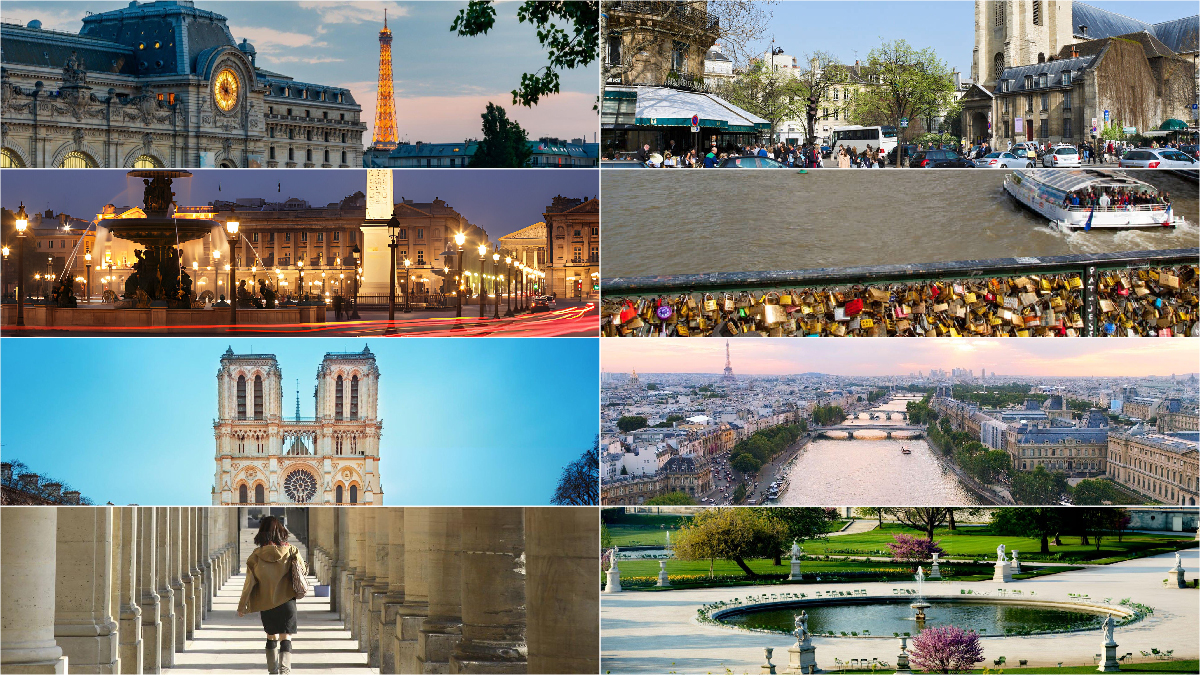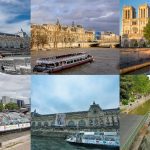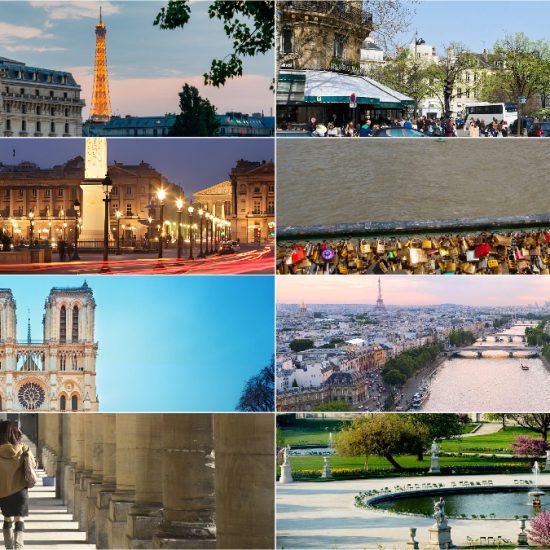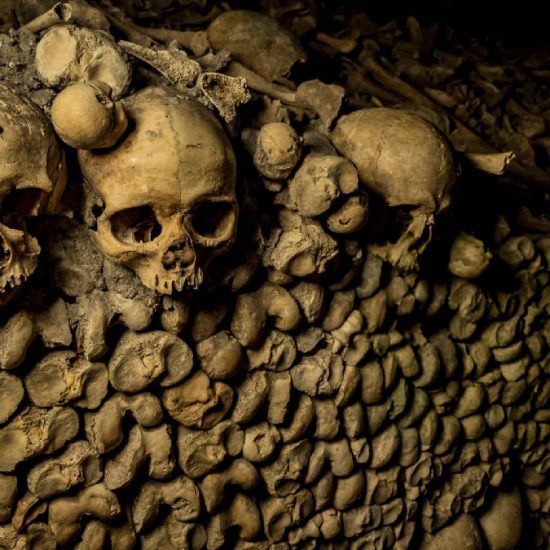Table Of Content
Are you tired of wasting time and missing out on the best attractions near the Louvre Museum? Imagine being so close to one of the world’s most famous museums, yet not knowing where to go or what to see next. Picture the frustration of wandering, feeling overwhelmed by the multitude of options and unsure which ones are truly worth your time. The fear of missing out on hidden gems and must-see sites can be paralyzing. Don’t let indecision or lack of information ruin your once-in-a-lifetime trip to Paris.
In the article The Best Attractions Near Louvre Museum. With this comprehensive guide, you’ll have all the insider tips and recommendations. Say goodbye to confusion and hello to a well-planned itinerary that ensures you make the most of your visit.
From iconic landmarks to off-the-beaten-path treasures, this guide will lead you to the best attractions that complement your Louvre experience perfectly. Don’t waste another moment – grab your copy now and turn your trip into an unforgettable adventure! Discover the hidden gems surrounding the Louvre Museum, a treasure trove of art, history, and cultural experiences in the heart of Paris.
Key Takeaways:
- Tuileries Garden offers a serene oasis with fountains and sculptures
- Musée d’Orsay showcases impressive French art from the 19th-20th centuries
- Seine Riverbanks provide romantic promenades and iconic bridges like Pont des Arts
- Saint-Germain-des-Prés exudes intellectual and artistic charm with historic cafés
Best Places To Visit Near Louvre Museum
1. Tuileries Garden (Jardin des Tuileries)

The Tuileries Garden (Jardin des Tuileries) is an ancient and carefully planted public garden in the heart of Paris between the Louvre Museum and the Place de la Concorde. Catherine de’ Medici created the garden in the 16th century, and it has a classical French design with geometric designs and symmetrical layouts.
The garden has ponds, fountains, seasonal floral screens, and statues and sculptures by notable artists such as Auguste Rodin. Tourists may relax on benches, sip refreshments at garden cafés, and enjoy panoramic views of Parisian landmarks. The Tuileries Garden is a quiet oasis in the city’s heart that offers both cultural activities and an idyllic escape.
2. Palais Royal

The Palais Royal, one of the attractions near Louvre museum located in Paris‘ first arrondissement, is a historic palace with a rich history and cultural significance. It was constructed in the 17th century and has since worked as a royal house and a government facility. The palace has a traditional design and a lovely plaza known as the Cour d’Honneur, enclosed by famous black and white striped columns dubbed “Colonnes de Buren.”
The Palais Royal is renowned for its calm gardens, tree-lined paths, and statues. The inner garden offers a quiet sanctuary for tourists as well as locals. The palace houses government offices, especially the Constitutional Council, near the renowned Comédie-Française theatre.
The arcades surrounding the Palais Royal are home to elegant stores, galleries, and restaurants, providing a unique shopping and dining experience. The Fontaine de Leda, a focal fountain in the gardens, adds to the atmosphere of this historic site. The Palais Royal, situated in the heart of Paris, is easily accessible by public transit. Visitors are encouraged to enjoy its cultural richness, architectural elegance, and peaceful setting.
3. Place de la Concorde

The Place de la Concorde is a notable tourist attraction near the Louvre Museum in Paris, France. It is found near the eastern end of the Champs-Élysées in the 8th district. The square is renowned for its historical significance, lovely buildings, and noteworthy landmarks.
The Obelisk of Luxor, a 3,300-year-old Egyptian obelisk presented to France by Muhammad Ali Pasha, the ruler of Ottoman Egypt, in 1833, is the Place de la Concorde’s most prominent feature. The obelisk originally stood at the entrance to the Luxor Temple in Egypt and was transported to Paris in the nineteenth century.
The area is enclosed by two identical stone buildings, the Hôtel de Crillon and the Hôtel de la Marine, which face the Champs-Élysées entry. The square is additionally held by several exciting structures, notably the French Ministry of Marine and the French Naval headquarters.
The Place de la Concorde has a rich history and has been the site of many historical events, including the execution of King Louis XVI during the French Revolution. Today, it is a popular public spot for gatherings and activities and an attraction for travellers touring Paris.
4. Musée d’Orsay

The Musée d’Orsay is a famous museum in Paris, France, on the left side of the Seine River. It is in the Gare d’Orsay, a historic railway station built in 1900 for the Exposition Universelle (World Fair). The museum is renowned for its rich collection of French art covering the mid-nineteenth and early twentieth centuries.
The Musée d’Orsay’s collection includes a broad diversity of paintings, sculptures, decorative arts, and photography, representing the artistic developments of the era between 1848 and 1914. Some of the most important works in the museum’s collection are by renowned artists such as Vincent van Gogh, Claude Monet, Édouard Manet, Auguste Rodin, and others.
The museum’s concentration on the Impressionist and Post-Impressionist movements makes it a significant institution for people interested in work from this turning point in French art history. Visitors to the Musée d’Orsay may find various artistic styles, including Realism, Impressionism, metaphor, and Art Nouveau.
In addition to its regular collection, the Musée d’Orsay frequently holds temporary exhibitions, enabling visitors to discover new elements of nineteenth- and early twentieth-century art. The museum’s unusual location in a former railway station contributes to its distinct atmosphere and architectural attractiveness.
Overall, the Musée d’Orsay is an essential attraction near the Louver museum stop for art lovers and those interested in France’s cultural heritage from the first half of the twentieth century.
5. Île de la Cité
Île de la Cité is a tiny island on the Seine River in the centre of Paris, France. It is considered Paris’ historical and geographical hub and one of the city’s two major natural islands (the other being Île Saint-Louis). The island has played a significant role in the creation and history of Paris.
6. Notre-Dame Cathedral

Notre-Dame Cathedral is not an attraction near the Louvre Museum but is relatively close and fairly reachable on foot. Both landmarks are situated in Paris’s first arrondissement, and the walk between them takes approximately fifteen to twenty minutes, depending on your pace.
To go from the Louvre Museum to Notre-Dame Cathedral:
- Head west from the Louvre along the Seine River until you reach the Pont Neuf (the oldest standing bridge across the Seine).
- Cross the Pont Neuf to the Île de la Cité, the island in the middle of the Seine River where Notre-Dame is situated.
- Once on the Île de la Cité, continue walking west, and you’ll soon reach Notre-Dame Cathedral.
- Notre-Dame Cathedral is a masterwork of French Gothic architecture and an emblem of Paris. While the cathedral is famous for its facade, which features the known gargoyles and flying buttresses, the interior is equally unique, with beautiful stained glass windows, sculptures, and historic items.
Sainte-Chapelle: An impressive medieval chapel famous for its exquisite stained glass windows. It was constructed to house Christian relics, including the Crown of Thorns.
Palais de Justice (Palace of Justice): The historic courthouse of Paris, situated on the island’s southern side.
Conciergerie: Once a royal palace and later a prison during the French Revolution, the Conciergerie is now a museum. It housed notable prisoners, including Marie Antoinette.
Square du Vert-Galant: A small public park at the island’s western tip, delivering a peaceful retreat with scenes of the Seine and surrounding landmarks.
Pont Neuf: Despite its name (which translates to “New Bridge”), Pont Neuf is the ancient standing bridge across the Seine in Paris. It connects Île de la Cité to both the Left and Right Banks.
7. Saint-Germain-des-Prés

Saint-Germain-des-Prés, attractions near the Louvre museum map situated on the Left Bank of the Seine River in the fantastic Paris city, exude ideology, creative flair, and timeless appeal. This historic period has been known as a cultural hotspot, drawing writers, philosophers, and artists to its liberal embrace.
The Vénérable Église de Saint-Germain-des-Prés is a historic abbey church with roots going back to the sixth century. The church, with its Romanesque and Gothic architecture, has experienced the ebb and flow of Parisian history, symbolizing continuity and opposition.
Wandering along the cobblestone alleyways, one can feel the lively energy of the neighbourhood travelling from its famed cafés. With its vintage charm, Café de Flore and Les Deux Magots were previously intellectual hangouts for scholars such as Jean-Paul Sartre, Simone de Beauvoir, and Albert Camus. These iconic enterprises have kept the air of lively conversations, creative thoughts, and the clinking of coffee cups, retaining an ageless allure.
Boulevard Saint-Germain, the district’s headteacher avenue, is an energetic tapestry of booksellers, boutiques, and restaurants. As you go along, you’ll be enveloped in a setting that perfectly merges the old and new, where history coexists quietly with contemporary Parisian life.
The Luxembourg Gardens, situated just a stone’s throw away, beckon to customers seeking a natural break. This green refuge with statues, fountains, and meticulously kept lawns provides an idyllic respite from the city’s hustle and bustle. Visitors may stroll through its lanes, see the beauty of the Luxembourg Palace, or rest on a quiet bench and reflect on Saint-Germain-des-Prés’ timeless appeal.
The streets are packed with galleries and antique shops, which will captivate art fans. The neighbourhood’s creative pulse is evident, and each artwork or vintage appreciation has a narrative, adding to the district’s cultural tapestry.
Each spot in Saint-Germain-des-Prés is a canvas for history, intelligence, and creativity. The beautiful blend of historical construction, literary legacy, and contemporary vibrancy elevates this Parisian jewel above easy geography—it is a living tribute to the going-on spirit of intellectual and artistic pursuits. Whether you’re new to the city or an experienced flâneur, Saint-Germain-des-Prés invites you to enter a world where time looks to stand still, and the spirit of Parisian culture unfolds in every beautiful detail.
8. The Seine Riverbanks

The Seine Riverbanks in Paris are a dazzling tapestry of history, culture, and love that runs through the city’s heart. These renowned riverbanks, flanked by lovely quays, historic bridges, and picturesque landmarks, create a beautiful environment that has established the Seine as a symbol of Parisian allure. Here’s a closer look at the attractions of the Seine river banks:
1. Quais and Promenades: The Quais along the Seine, including Quai de la Tournelle and Quai des Grands Augustins, offer pleasant promenades for residents and visitors.
2. Historic Bridges: The Seine hosts some of the world’s most incredible bridges. Pont Neuf, with its arched design and historical significance, Pont Alexandre III, a decorative art masterpiece, and Pont des Arts, known for its love locks, connect the city and add to the romantic ambience.
3. Landmarks Along the Banks: As you stroll into the riverbanks, you can access amazing views of a few of Paris’ finest sites. The Louvre Museum, housed in an older palace, the Musée d’Orsay, a railway station converted museum, and the stunning Hôtel de Ville are just some magnificent structures that line the Seine’s banks.
4. Cruise and Riverboat Tours: Exploring the Seine by boat is an authentic Parisian experience. Day or night, cruises offer panoramic views of the city, allowing tourists to see its attractions in the daylight or illuminated by the brilliant lights of the evening.
9. Pont des Arts

The Pont des Arts, frequently called the “Bridge of Arts,” is a pedestrian bridge throughout the Seine River in Paris. It links the Institut de France (on the left bank) to the Louvre Palace’s central square (on the right). The bridge is renowned for its distinctive form and historical link with love locks. In the early 2000s, the bridge gained international recognition for its habit of securing padlocks (love locks) to its railings. Couples would write their names or initials on the locks before dropping the key into the Seine to indicate eternal love.
These attractions near the Louvre museum provide diverse experiences, from art and history to gardens and vibrant city life. Whether you’d like to discover the culture or just take in the vibe of Paris, the area around the Louvre Museum has a lot of things to see and do.
Summary
Notable sites within the Louvre Museum include the serene Tuileries Garden, the tranquil Palais Royal with its characteristic “Colonnes de Buren,” and the incredible Place de la Concorde, featuring the Luxor Obelisk. The Musée d’Orsay, built in a historic railway station, displays French art from the mid-nineteenth to the beginning of the twentieth century.
The Île de la Cité, an idyllic island on the Seine River, hosts sites including Notre-Dame Cathedral and Sainte-Chapelle. Saint-Germain-des-Prés is an academic hub with historic churches, famous cafés, and a busy boulevard. The Seine Riverbanks, flanked with quays and promenades, offer amazing views and a romantic ambience. The Pont des Arts, famous for its love locks, remains an exquisite spot despite their removal.
The Louvre’s surroundings offer an array of experiences that mix art, history, gardens, and the attraction of Parisian life. Whether exploring cultural landmarks, unwinding in gardens, or admiring the Seine’s beauty, the area around attractions near the Louvre museum map is a captivating blend of charm and cultural richness.
Frequent Asked Questions
Where Is The Louvre Museum Located?
The Louvre Museum is a museum in Paris, France. It is located in the first arrondissement, near the right bank of the Seine River. The museum’s location is Rue de Rivoli, 75001 Paris, and it spans the right bank, making it an important and easily available site for visitors.
Can you recommend a picturesque spot for river views near the Louvre Museum?
The Pont des Arts, occasionally referred to as the “Bridge of Arts,” is a pedestrian bridge offering stunning views of the Seine River and surrounding tourist attractions. While it is renowned for its love locks (despite their eradication), it is still an excellent site to view on the Seine.
Are there gardens near the Louvre Museum for a relaxing break?
Yes, the Tuileries Garden is a precisely intended public garden located between the Louvre Museum and the Place de la Concorde. It offers an idyllic sanctuary with ponds, fountains, and seasonal floral displays, resulting in a perfect spot to rest in the city’s heart.







No Comment! Be the first one.